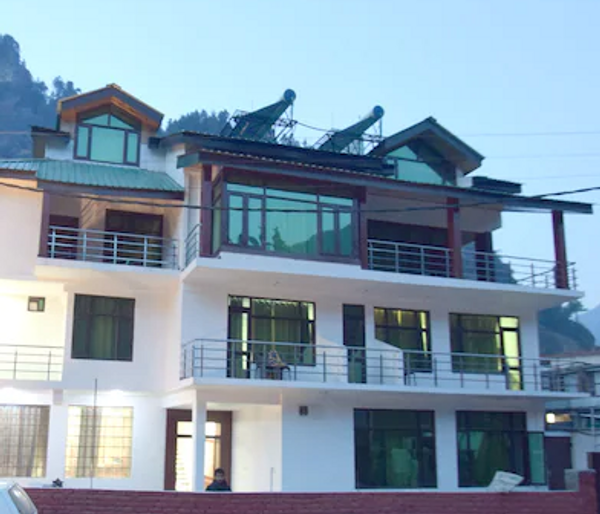The Forgotten History of Junkyards: How Salvage Yards Have Evolved Through Time
 Jackson Lilly
16 Jan, 2025
10 mins read
217
Jackson Lilly
16 Jan, 2025
10 mins read
217

Junkyards have played a significant, though often overlooked, role in the development of industries such as automotive, recycling, and even the environment. From humble beginnings to becoming crucial parts of modern economies, salvage yards have transformed considerably over the decades. The journey of junkyards is intertwined with the story of the automobile, the growth of recycling practices, and the changing landscape of environmental awareness. Today, services like Canberra Cash for Cars also highlight the importance of junkyards in promoting sustainability, as they provide a way to responsibly dispose of damaged or old vehicles while offering cash in return. This article aims to explore the fascinating history of junkyards, from their origin to their current form, shedding light on how these places have evolved over time.
The Early Beginnings of Junkyards
The concept of junkyards can be traced back to the early 20th century. Initially, the primary purpose of junkyards was to provide a place where broken or outdated items could be stored, especially metal objects. During this period, these places were not specialized in automobiles. People would discard various goods like scrap metal, household items, and old machinery, hoping to salvage something of value from them.
The rise of the automobile in the early 1900s marked a significant shift. As cars became more widespread, the need for an organized place to dispose of old or damaged vehicles grew. Early junkyards were largely unregulated, often simply chaotic collections of discarded vehicles and parts. Many of these early yards were simply open spaces where people would dump cars and their components.
Key Facts About Early Junkyards:
- Unregulated: Junkyards in the early years had minimal rules.
- Not car-focused: While many cars were discarded, the yards contained various types of scrap items.
- Low-tech: Little machinery was used, and everything was manually sorted.
The Growth of the Automobile Industry and Junkyards
The explosion of the automobile industry in the mid-1900s created a whole new demand for junkyards. With millions of cars on the road, the need for a place to store and scrap old, broken-down, or damaged vehicles became more urgent. During this time, junkyards started to become more specialized, focusing primarily on cars.
The first significant change was the establishment of “auto wrecking yards,” a more organized version of earlier junkyards. These yards not only served as places to dispose of vehicles but also as hubs where parts could be salvaged and resold. The process of car dismantling became more efficient, with parts like engines, transmissions, and tyres being extracted and repurposed. This era marked the start of a growing car salvage industry that would thrive in the coming decades.
Key Facts About Car-Focused Junkyards:
- More Organization: Car-focused junkyards began to appear, focusing on vehicles.
- Parts Reuse: Salvaged parts became a key part of the junkyard business.
- Increased demand: As more cars were produced, the need for junkyards grew.
The Modern Era: How Junkyards Have Changed
Today, junkyards are much more than just places to dispose of vehicles. They have become highly regulated businesses that play an essential role in the recycling industry. Modern junkyards or salvage yards are far more organized and technologically advanced than their predecessors. Many of them now use digital inventories to track car parts, making it easier for customers to find the exact item they need. They are also more environmentally conscious, adhering to strict environmental regulations to reduce pollution.
One significant development in modern junkyards is the rise of the automotive recycling industry. Cars are dismantled and their parts are sorted to be either recycled or reused. For example, metals like steel and aluminium are extracted and melted down to be repurposed in the manufacturing of new vehicles or products. This process has not only made junkyards a critical part of the recycling chain but has also helped reduce the environmental impact of vehicle disposal.
Key Facts About Modern Junkyards:
- Technologically Advanced: Digital systems track inventory and parts.
- Environmental Impact: Junkyards help reduce waste through recycling.
- Regulated: Strict regulations ensure safety and sustainability.
The Role of Junkyards in the Car Removal Industry
With the ongoing advancement in vehicle technology, junkyards have adapted to handle not just the scrap but also vehicle removal services. When a car reaches the end of its life, owners are often faced with the challenge of how to get rid of it. This is where car removal services come in. Many junkyards now offer a car removal service that involves towing the car from the owner's location and paying them for their damaged or unused vehicle.
In Australia, services like Scrap my car Canberra are becoming increasingly popular. These services pay cash for vehicles that are no longer roadworthy and handle all the paperwork involved in the removal. If you are looking for a quick and efficient way to get rid of a damaged vehicle, many salvage yards in Canberra offer excellent services like cash for damaged cars Canberra. You can rely on these companies to remove your old car and ensure that it is disposed of in an environmentally responsible manner.
A Comparison of Modern Junkyards and Early Salvage Yards
FeatureEarly JunkyardsModern JunkyardsOrganizationDisorganized and chaoticHighly structured with digital inventory systemsTechnologyLimited technology usageAdvanced machinery and digital toolsRecycling PracticesMinimal recyclingComprehensive recycling of metals, fluids, and partsEnvironmental ImpactLess regulatedStrictly regulated for environmental protectionService OfferedBasic disposal of goodsVehicle removal, part sales, environmental disposal
The Environmental Impact of Junkyards
As society becomes more aware of the impact of waste on the planet, junkyards have played a crucial role in mitigating environmental damage. Many modern junkyards are designed with the environment in mind, focusing on the responsible disposal of hazardous materials like motor oil, battery acids, and other car fluids. These substances can be harmful if left untreated, but junkyards today have systems in place to manage and safely dispose of them.
Furthermore, the practice of salvaging car parts has contributed to reducing the need for new raw materials. For example, metals like steel and aluminium, which require significant energy to mine and process, can be recycled and reused, reducing overall resource consumption and energy expenditure.
Key Facts About Junkyards and the Environment:
- Hazardous Materials: Junkyards safely dispose of dangerous car fluids.
- Metal Recycling: Metals like steel and aluminium are recycled, reducing the need for new mining.
- Waste Reduction: Proper disposal practices minimize pollution and environmental harm.
Conclusion
The evolution of junkyards, from their humble beginnings to their current form, reflects the changing needs of society. Today, salvage yards are an integral part of the automotive industry, offering everything from vehicle removal services to recycling. As environmental concerns continue to grow, junkyards play an essential role in managing waste and promoting sustainability.
If you are in Canberra and looking to dispose of an old or damaged vehicle, services like Scrap my car Canberra are a smart choice. They provide cash for damaged cars Canberra, making the process simple and environmentally friendly while offering a fair payout for your unwanted vehicle.
Junkyards have indeed come a long way from their chaotic early days. They now stand as a symbol of progress, not only in terms of technology but also in how they contribute to a more sustainable and efficient world. The role of salvage yards in our daily lives cannot be overstated, and their ongoing evolution will continue to impact industries and communities for years to come.
Written By:
Jackson Lilly



Hotels at your convenience
Now choose your stay according to your preference. From finding a place for your dream destination or a mere weekend getaway to business accommodations or brief stay, we have got you covered. Explore hotels as per your mood.





